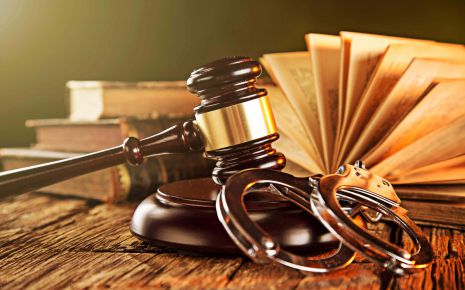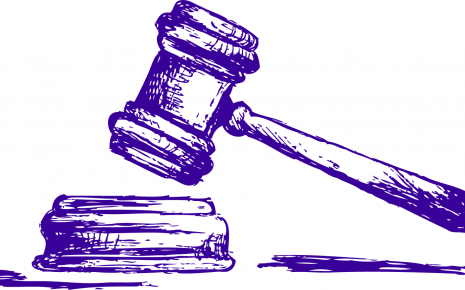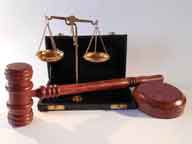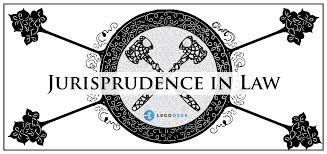Constitutional Conundrum: Understanding Legal Dilemmas and Resolutions
Within the complex network of legal structures that regulate an entire
country, constitutional issues frequently engender bewildering complexities and
controversies. A constitutional quandary arises when there is significant
disagreement and controversy surrounding the interpretation, implementation, or
modification of a nation's fundamental legislation.
This article examines the intricacies associated with constitutional matters, scrutinising significant instances and the ramifications they can impose on the governance of a country. Judicial legislation, also known as "judicial law" or "Judge-made law," comprises merely a decree, proclamation, or declaration of a law by the judiciary, with particular emphasis on the Supreme Court. Although the constitutional authority of the legislature is to enact laws.
There may be circumstances in which the current legislation passed by the legislature is inadequate to ensure the proper administration of justice. There is a contention that despite the calendar-breaking legislative activity of India's State and Parliament Legislatures, the number of laws enacted annually is insufficient to address the perpetually changing demands of modern society.
It is not feasible to anticipate that all potentialities and contingencies will have been adequately accounted for in the legislation, as it often fails to align with evolving needs and ideals. Therefore, not only must but they are obligated to intervene in order to close the disparity. In addition, the fulfilment of the objectives of justice is a constitutional right under such conditions, which permits the superior judiciary to issue interim directives until the legislature passes substantive legislation. Judges therefore establish legislation in response to societal needs, and that legislation is presently acknowledged on an international scale.
Nevertheless, this conduct ought not to be construed as activism, as Article 133 specifically acknowledges judge-made law, which is alternatively referred to as "judicial law," and includes both the legislature and the judiciary as "other competent authorities."
Furthermore, considering the extensive jurisdiction of the Court as articulated in Articles 32, 226, 227, 141, and 144, it becomes apparent that the judiciary is endowed by the Constitution with the power to promulgate rational legislation. In its nascent stages, the Supreme Court of India adopted the British approach of limited judicial review, albeit with remarkable prudence. Subsequently, the struggle for supremacy gained widespread recognition. During the 1960s and 1970s, the Court rendered pivotal decisions that significantly transformed both the political and judicial milieu of India.
Through the expansion of the applicability of a number of constitutional provisions, Maneka Gandhi's decision propelled the field of human rights law into the post-emergency era. To illustrate, the development of the judiciary has led to the proliferation of amendments to Articles 14 and 21. Following this, the constitutional courts strategically employed public interest litigation as a catalyst to effectuate societal and economic progress. This resulted in the formation of legal doctrines concerning human rights, the environment, compensation, and destitution.
The widespread acceptance of the way in which judge-made legislation influences social dynamics is due to the fact that it strives for progress rather than revolution. "The Supreme Court's problems sometimes call for the knowledge of an economist, the insight of a poet, the experience of an executive, the scientific knowledge of a politician, and the perspectives of a historian." Furthermore, legislative responsibilities may at times be required. It has essentially rewritten the Constitution and invigorated the existing laws through its interpretation.
Divergent Interpretations: When critical institutions or branches of government interpret the constitution inconsistently, a constitutional crisis may ensue. Divergences concerning the interpretation of the constitution may impede the process of making decisions, resulting in a condition where the country is beset by unpredictability and a dearth of transparent governance.
Amending Unresolved Matters: Attempts to amend the constitution that generate contention over proposed changes may become a source of contention. Divergent viewpoints concerning amendments have the potential to erode public consensus, thereby presenting the nation with a constitutional dilemma involving conflicting conceptions of its foundational legislation.
Executive gridlock or overreach: A constitutional crisis may result when the legislative branch veers significantly off course or when the executive branch exceeds its constitutional authority. A constitutional conundrum may result from the fact that legislative impasse can impede the operation of the government and executive overreach can undermine the system of checks and balances.
The deterioration of fundamental rights A crisis could potentially arise in the event that fundamental rights protected by the constitution are perceived to be eroding. Unjustified encroachments on individual liberties that lack explicit constitutional justification may result in disturbance among the public and present a constitutional dilemma, necessitating a reassessment of the intricate equilibrium between rights and the wider social fabric.
The inadequacy of constitutional mechanisms A constitutional crisis may ensue in extreme circumstances when the established mechanisms designed to resolve disputes or ensure accountability prove inadequate. Potential disruptions to the nation's constitutional safeguards, such as the judicial system or electoral processes, may result in a state of uncertainty and a constitutional conundrum.
A dedication to the rule of law, observance of constitutional principles, and a readiness to engage in dialogue and compromise are critical when confronted with these circumstances. The resolution of constitutional crises necessitates a collaborative endeavour to reassert the fundamental principles that govern a country's administration; this will alleviate the constitutional dilemma and reinstate stability to the constitutional system.
In conclusion, constitutional dilemmas are intrinsic to the intricate process of formulating and interpreting the foundational legislation that regulates an entire country. A dedication to constructive discourse, adherence to legal procedures, and a readiness to accommodate societal transformations all while safeguarding the fundamental tenets enshrined in the constitution are imperative for addressing these challenges. In tandem with societal progress, constitutional frameworks must also undergo transformation; effectively addressing these complexities is essential for the sustainability and functionality of a country's governance.
This article examines the intricacies associated with constitutional matters, scrutinising significant instances and the ramifications they can impose on the governance of a country. Judicial legislation, also known as "judicial law" or "Judge-made law," comprises merely a decree, proclamation, or declaration of a law by the judiciary, with particular emphasis on the Supreme Court. Although the constitutional authority of the legislature is to enact laws.
There may be circumstances in which the current legislation passed by the legislature is inadequate to ensure the proper administration of justice. There is a contention that despite the calendar-breaking legislative activity of India's State and Parliament Legislatures, the number of laws enacted annually is insufficient to address the perpetually changing demands of modern society.
It is not feasible to anticipate that all potentialities and contingencies will have been adequately accounted for in the legislation, as it often fails to align with evolving needs and ideals. Therefore, not only must but they are obligated to intervene in order to close the disparity. In addition, the fulfilment of the objectives of justice is a constitutional right under such conditions, which permits the superior judiciary to issue interim directives until the legislature passes substantive legislation. Judges therefore establish legislation in response to societal needs, and that legislation is presently acknowledged on an international scale.
Nevertheless, this conduct ought not to be construed as activism, as Article 133 specifically acknowledges judge-made law, which is alternatively referred to as "judicial law," and includes both the legislature and the judiciary as "other competent authorities."
Furthermore, considering the extensive jurisdiction of the Court as articulated in Articles 32, 226, 227, 141, and 144, it becomes apparent that the judiciary is endowed by the Constitution with the power to promulgate rational legislation. In its nascent stages, the Supreme Court of India adopted the British approach of limited judicial review, albeit with remarkable prudence. Subsequently, the struggle for supremacy gained widespread recognition. During the 1960s and 1970s, the Court rendered pivotal decisions that significantly transformed both the political and judicial milieu of India.
Through the expansion of the applicability of a number of constitutional provisions, Maneka Gandhi's decision propelled the field of human rights law into the post-emergency era. To illustrate, the development of the judiciary has led to the proliferation of amendments to Articles 14 and 21. Following this, the constitutional courts strategically employed public interest litigation as a catalyst to effectuate societal and economic progress. This resulted in the formation of legal doctrines concerning human rights, the environment, compensation, and destitution.
The widespread acceptance of the way in which judge-made legislation influences social dynamics is due to the fact that it strives for progress rather than revolution. "The Supreme Court's problems sometimes call for the knowledge of an economist, the insight of a poet, the experience of an executive, the scientific knowledge of a politician, and the perspectives of a historian." Furthermore, legislative responsibilities may at times be required. It has essentially rewritten the Constitution and invigorated the existing laws through its interpretation.
- Dilemma of Interpretation:
Divergent understandings of the language of the constitution constitute a significant contributor to constitutional conundrums. Diverse perspectives may exist among legal scholars, justices, and policymakers regarding the intent and significance of particular provisions within the Constitution. Divergences concerning matters including individual liberties, governmental authority, and the partition of labour may ensue, engendering a complex labyrinth of legal ambiguity.
In the 19th century, conventional positivist jurisprudence was established by English jurists Bentham and Austin. However, Bentham's legal theory, referred to as "utilitarian individualism," held a dissenting view towards judge-made law. Austin's perspective completely excludes judge-made law. In the 20th century, Hart, Kelsen, and others further developed this notion by arguing that the legislative branch, and not the judiciary, ought to have the authority to enact laws. Their sole duty consists of supervising and interpreting the implementation of the legislation that has been enacted by the legislature.
Judges have the authority to legislate, according to the sociological school of jurisprudence, which Geny, Duguit, and others established in Europe towards the end of the 19th century and was founded in the United States by Roscoe Pound and others. Functionalism, a more radical school of sociological jurisprudence in the United States, was enabled by Pound's theory.
Grey, one of the realist school's founders, asserted that justices construct laws using non-legislative, non-guidance-based materials. Grey contends that while it has been occasionally asserted that legislative law and judge-made law are the two types of law, in reality, all law is judge-made law. Frank Llewelyn even asserted that judges create the law, as opposed to merely discovering it; judges are the genuine creators of the law.
As for the declaratory hypothesis, it posits that judges are solely the individuals who initially established the law. They locate the law and declare it regarding a particular matter. A multitude of authors, jurists, and judges have conveyed their endorsement of this perspective. Salmon asserts that this holds true for precedents from the past that have had lasting legal ramifications. Bentham characterised this declarative doctrine as "a deliberate fallacy whose purpose was to usurp legislative authority by and for entities that were unable or unwilling to openly assert it."
Prominent rulings regarding judicial legislation.
Establishment of the jurisprudence of state liability.
In 1953, Rudul Sah was arrested on suspicion of homicide against his spouse. In 1968, an Additional Sessions Judge dismissed him from custody pending further orders after vacating him of all charges. Nevertheless, he remained incarcerated until 1982, when the media became aware of his predicament, despite the fact that his acquittal order had been in effect for fourteen years. On his behalf, a public interest litigation (PIL) was subsequently initiated. This is an unprecedented decision in the annals of State liability law. It is particularly significant because it paved the way for the development of compensatory jurisprudence for violations of constitutionally protected rights.
Implementing restrictions on the executive branch.
S.R. Bommai assumed the position of chief minister of Karnataka during the Janata Dal Government, which was deposed subsequent to the state's implementation of President's Rule under Article 356. The Supreme Court then deliberated on the legitimacy and limits of the President's imposition of power in a state, following the denial of his writ petition by the Karnataka High Court on the same grounds. The Supreme Court imposed restrictions on the implementation of Article 356 and established several prerequisites, including the President's proclamation obtaining approval from both houses of Parliament prior to its use. The reinstatement of the terminated government occurs two months subsequent to the declaration of disapproval by both Houses.
Whether judges establish the law or determine it.
Analysing the aforementioned seminal decisions demonstrates unequivocally that judges establish legislation in situations where explicit legal principles are absent or there is a legal lacuna. However, judges occasionally use their interpretive abilities or judicial ingenuity to discern the law within the legislative framework when the legislature's desiccated skeleton fails to provide justice or "complete justice." To put it simply, "the judge infuses life and blood into the dry skeleton provided by the legislature and creates a living organism appropriate and adequate to meet the needs of the society."
- Obstacles to Amendment:
Constitutional dilemmas may arise in the course of endeavours to amend the constitution. Developing amendments that effectively reconcile the changing demands of society with the fundamental tenets of the constitution is a nuanced undertaking. The ongoing discourse surrounding matters such as marriage equality, voting rights, and the extent of presidential authority has brought attention to the inherent conflict between safeguarding the integrity of the Constitution and accommodating developments in society.
The process of amending a constitution is complex and requires thoughtful deliberation of numerous elements. The constitutional dilemma emerges due to the intrinsic conflict between the necessity for stability and the criticality of adjusting to a rapidly changing society. Effectively managing these obstacles necessitates a comprehensive comprehension of the intricacies of legal, political, and social interactions, coupled with an unwavering dedication to preserving the foundational tenets that underpin a country's administration.
- The Judgement of Fundamental Rights:
Conflicts between societal interests and individual liberties frequently lead to constitutional quandaries. Concerns such as privacy, the right to bear arms, and free speech necessitate that societies find it difficult to reconcile individual liberties with the need to ensure public safety. Courts are often tasked with resolving such disputes, and their rulings significantly influence the development of constitutional law.
The struggle to strike a balance between fundamental rights highlights the intrinsic conflicts that exist within constitutional governance. This task necessitates ongoing attentiveness, reflective consideration, and a dedication to maintaining the fundamental values that underpin democratic communities. To effectively address this dilemma, one must strike a nuanced balance between safeguarding individual liberties and promoting the common good, thereby preserving the robustness and adaptability of the constitutional framework in the face of the constantly evolving dynamics of the contemporary era.
- Federalism and the Rights of the States:
Constitutional complexities may arise in nations with a federal structure due to the manner in which powers are distributed between the central government and individual states. Challenges pertaining to matters including healthcare policy, environmental regulations, and immigration underscore the persistent rivalry between a robust central authority and state sovereignty, thereby prompting inquiries into the appropriate extent and boundaries of federal authority.
- Scenarios of Constitutional Crises:
Constitutional crises may arise as a result of political instability or disputes surrounding election outcomes, among other extreme circumstances. The potential consequence of failing to address these crises within the current constitutional structure is a deterioration of the rule of law. Maintaining constitutional order while ensuring the integrity of democratic principles is a delicate balancing act in such circumstances.
Divergent Interpretations: When critical institutions or branches of government interpret the constitution inconsistently, a constitutional crisis may ensue. Divergences concerning the interpretation of the constitution may impede the process of making decisions, resulting in a condition where the country is beset by unpredictability and a dearth of transparent governance.
Amending Unresolved Matters: Attempts to amend the constitution that generate contention over proposed changes may become a source of contention. Divergent viewpoints concerning amendments have the potential to erode public consensus, thereby presenting the nation with a constitutional dilemma involving conflicting conceptions of its foundational legislation.
Executive gridlock or overreach: A constitutional crisis may result when the legislative branch veers significantly off course or when the executive branch exceeds its constitutional authority. A constitutional conundrum may result from the fact that legislative impasse can impede the operation of the government and executive overreach can undermine the system of checks and balances.
The deterioration of fundamental rights A crisis could potentially arise in the event that fundamental rights protected by the constitution are perceived to be eroding. Unjustified encroachments on individual liberties that lack explicit constitutional justification may result in disturbance among the public and present a constitutional dilemma, necessitating a reassessment of the intricate equilibrium between rights and the wider social fabric.
The inadequacy of constitutional mechanisms A constitutional crisis may ensue in extreme circumstances when the established mechanisms designed to resolve disputes or ensure accountability prove inadequate. Potential disruptions to the nation's constitutional safeguards, such as the judicial system or electoral processes, may result in a state of uncertainty and a constitutional conundrum.
A dedication to the rule of law, observance of constitutional principles, and a readiness to engage in dialogue and compromise are critical when confronted with these circumstances. The resolution of constitutional crises necessitates a collaborative endeavour to reassert the fundamental principles that govern a country's administration; this will alleviate the constitutional dilemma and reinstate stability to the constitutional system.
In conclusion, constitutional dilemmas are intrinsic to the intricate process of formulating and interpreting the foundational legislation that regulates an entire country. A dedication to constructive discourse, adherence to legal procedures, and a readiness to accommodate societal transformations all while safeguarding the fundamental tenets enshrined in the constitution are imperative for addressing these challenges. In tandem with societal progress, constitutional frameworks must also undergo transformation; effectively addressing these complexities is essential for the sustainability and functionality of a country's governance.
Law Article in India
Legal Question & Answers
Lawyers in India - Search By City
LawArticles
How To File For Mutual Divorce In Delhi

How To File For Mutual Divorce In Delhi Mutual Consent Divorce is the Simplest Way to Obtain a D...
Increased Age For Girls Marriage

It is hoped that the Prohibition of Child Marriage (Amendment) Bill, 2021, which intends to inc...
Facade of Social Media

One may very easily get absorbed in the lives of others as one scrolls through a Facebook news ...
Section 482 CrPc - Quashing Of FIR: Guid...

The Inherent power under Section 482 in The Code Of Criminal Procedure, 1973 (37th Chapter of t...
The Uniform Civil Code (UCC) in India: A...

The Uniform Civil Code (UCC) is a concept that proposes the unification of personal laws across...
Role Of Artificial Intelligence In Legal...

Artificial intelligence (AI) is revolutionizing various sectors of the economy, and the legal i...








Please Drop Your Comments